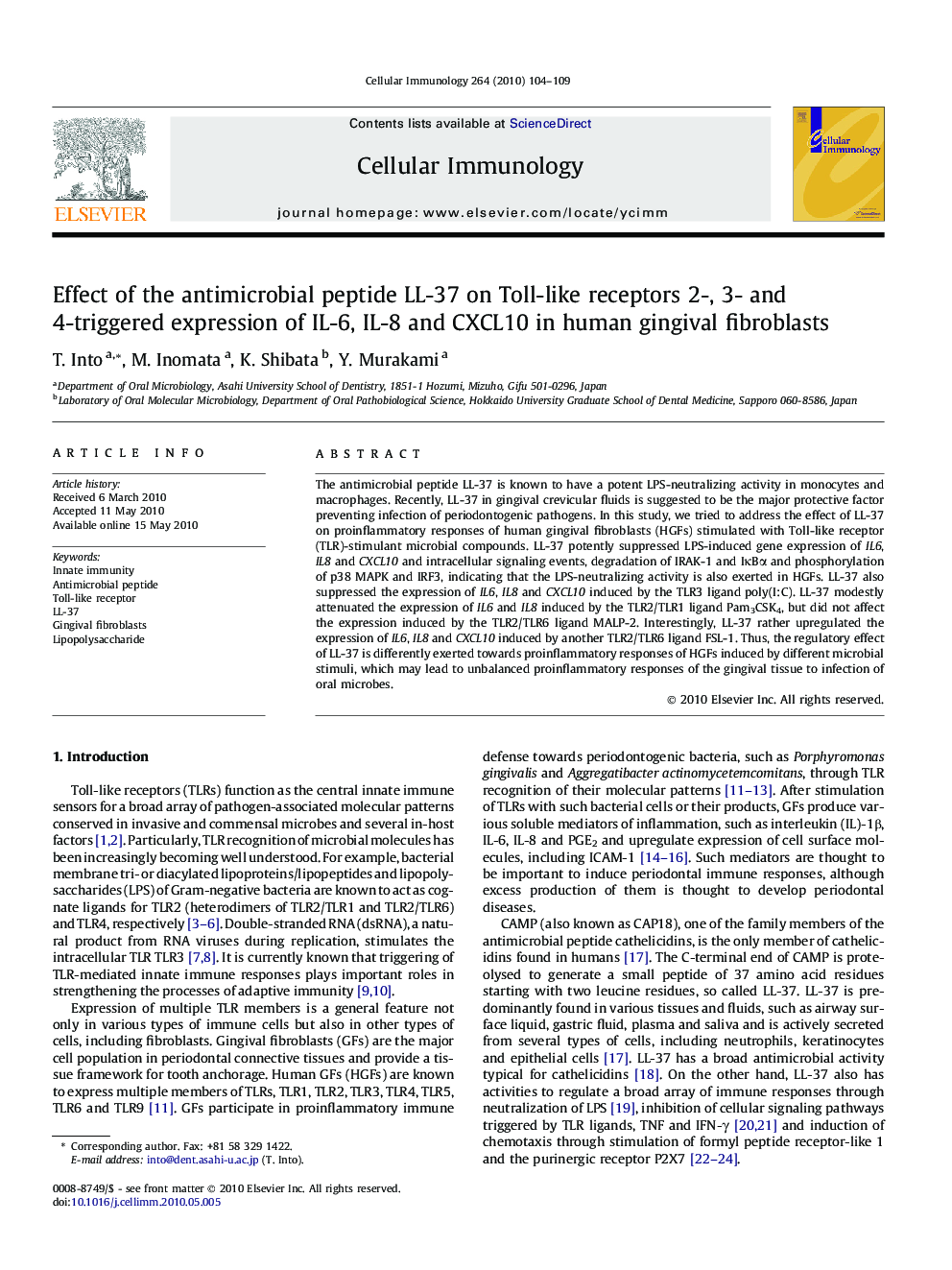| Article ID | Journal | Published Year | Pages | File Type |
|---|---|---|---|---|
| 2167618 | Cellular Immunology | 2010 | 6 Pages |
The antimicrobial peptide LL-37 is known to have a potent LPS-neutralizing activity in monocytes and macrophages. Recently, LL-37 in gingival crevicular fluids is suggested to be the major protective factor preventing infection of periodontogenic pathogens. In this study, we tried to address the effect of LL-37 on proinflammatory responses of human gingival fibroblasts (HGFs) stimulated with Toll-like receptor (TLR)-stimulant microbial compounds. LL-37 potently suppressed LPS-induced gene expression of IL6, IL8 and CXCL10 and intracellular signaling events, degradation of IRAK-1 and IκBα and phosphorylation of p38 MAPK and IRF3, indicating that the LPS-neutralizing activity is also exerted in HGFs. LL-37 also suppressed the expression of IL6, IL8 and CXCL10 induced by the TLR3 ligand poly(I:C). LL-37 modestly attenuated the expression of IL6 and IL8 induced by the TLR2/TLR1 ligand Pam3CSK4, but did not affect the expression induced by the TLR2/TLR6 ligand MALP-2. Interestingly, LL-37 rather upregulated the expression of IL6, IL8 and CXCL10 induced by another TLR2/TLR6 ligand FSL-1. Thus, the regulatory effect of LL-37 is differently exerted towards proinflammatory responses of HGFs induced by different microbial stimuli, which may lead to unbalanced proinflammatory responses of the gingival tissue to infection of oral microbes.
